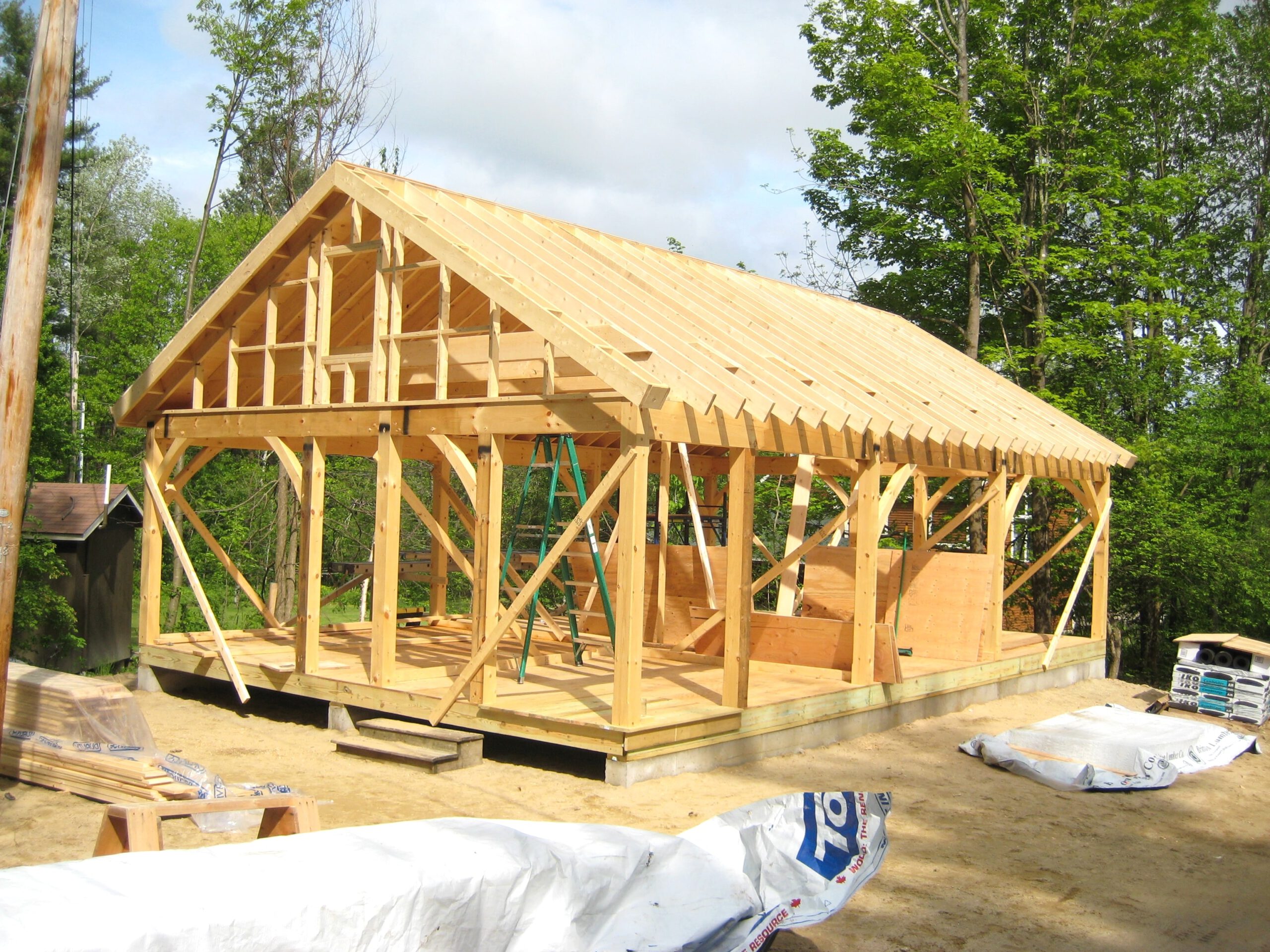As with many purchases, a timber frame is not just a commodity like gasoline where all you care about is availability and price. There are many factors you should consider:
Are timber frame drawings included? Will there be 3D drawings to facilitate comprehension of the plan along with detailed scaled drawings to compare to floor plans, elevations and panel drawings? Who is responsible for the drawing review? Is there any other documentation included, such as details and descriptions of how to coordinate the timber frame construction with the carpenters, electricians, plumbers, and mechanical contractors? Will there be communication between the trades people and the timber framer to be sure everyone will have what they need to complete their work satisfactorily and on budget? How is that communication handled? Does the contract spell out clearly what is being provided? Does everyone have adequate and appropriate insurance for the job?
What type of finish is applied to the timbers? Are they rough-sawn or planed, are the edges beveled and do they relate to the joinery, is some sort of sealer applied to slow drying, facilitate cleaning and to protect the wood? Will it be compatible with your finish treatment?
How is the frame protected at the fabricator’s site, during shipment and after it arrives? Is it wrapped with a material to protect it from the weather and at the same time let it breathe to avoid mold and mildew? Are the timbers stacked and organized for quick and easy assembly on site? When they were stacked and wrapped was adequate space provided between timbers for ventilation to inhibit mold and blue stain?
What about labor? Will the frame be delivered and offloaded? Does the price include delivery? Do you need equipment on site to remove it from the truck? Does your supplier provide a crane and the manpower to run it? Do they provide enough manpower to erect it or do you have to hire people? Are the people you or the supplier hired experienced timber framers? Do they have the proper tools and insurance coverages? Who is paying for their travel, room, and board? Are there other materials you need to provide for the frame raising such as 2×4’s and 2×6’s for bracing the frame?
What is the schedule for delivery and erection of the frame? How long will it take? How reliable is this schedule and does it depend on completion of other work prior to yours that they may not have control over? What if weather causes a delay, how will that impact your schedule? How and who coordinates the preparation of the site for the crane and the details of the foundation and deck work? How does the scheduling of the panel enclosure system get coordinated with the electrician and the timber framer?
Who installs the second floor deck and when? Is it safe to work on your frame without this deck installed or does work have to stop while someone else has to come in and frame the deck (barring any schedule conflicts)? Will there be an opportunity to install wiring before the deck is installed and will the frame be pre-drilled for ceiling fans, track lights or other specific electrical needs?
Who is responsible for keeping a clean and orderly job site free of hazards? What happens to the waste? Who picks it up, schedules a dumpster and when should it be there? What about electrical wiring that should be installed before the panels go on to avoid unsightly conduit?
These are some of the things you should be thinking about when choosing your timber framer and evaluating prices. Many of these items can add considerable cost to your project if they are not included or taken care of at the right time. By paying close attention to these details you can have a much better building experience and satisfactory outcome.
Author: Paul Freeman
